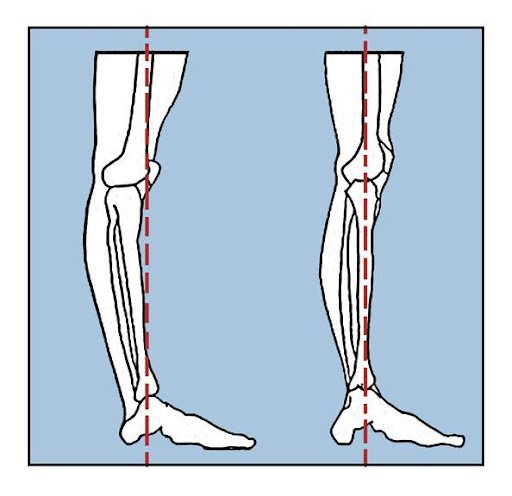Hypermobility: A Blessing or a Curse?
Scenario one:
You’re a dancer scrolling through social media and you see photo after photo of banana feet, ridiculously flexible backs, and knees so hyperextended they look like they’re backward. “I wish I had that!” you think to yourself.
Scenario two:
You’re a hypermobile dancer watching YouTube videos and see dancers with high, effortless jumps, easy balances, and incredible control. “I wish I had that!” you think to yourself.
Many people consider hypermobility something to be desired or even achieved artificially. We see the long, gorgeous lines of some bendy dancers and think, “That would make my dancing so much better!” For people with hypermobility, though, it often comes with a price. And while the lines look effortless, the work that it demands is not.
So what exactly is hypermobility?
In the broadest terms, “hypermobile” simply means “a greater range than usual in a joint.” Maybe you have shoulders you can pop in and out as a party trick; perhaps you can bend your back in half like a taco. You can have just one hypermobile joint - say, your elbows - or you can have generalized joint hypermobility, meaning multiple joints are affected.
Why might this cause issues?
Well for starters, that greater range of motion in the joint means more opportunities for the body to “cheat” in how it works. If you’ve got a super flexible lower back, it’s easy to work your arabesque just from there, rather than learning to use your whole spine and hips. Eventually, that constant wearing on your lower back may start to hurt. Or a dancer with banana feet might have lovely loose joints in several bones in the ankle - which will make her more likely to sprain her ankle regularly.
One of the aspects of hypermobility that’s dreamt of most is the hyperextended knee. Some dancers yearn for that line so much, they purposefully stretch into the back of their knees, trying to create artificial hypermobility. But what happens to the knee in hyperextension? Take a look at this illustration:
As you see, when the knee hyperextends, the bones above and below it are no longer nicely stacked. Imagine what happens if you’ve got two building blocks stacked vertically, and then you tilt them slightly. Do you imagine they’ll support the rest of the structure in the same way as two blocks solidly stacked? Dancers with hyperextension have to work twice as hard to have a strong standing leg that will support them through adagio, pirouettes, and more.
Studies have also shown that dancers with hypermobility often have less proprioception. “Proprioception” is basically your body’s awareness of where you are in space. This could mean that a hypermobile dancer might be more “clumsy”, may have a harder time with balancing, and might have trouble figuring out where their port de bras should be since they can’t tell where they are in space as well.
And finally, hypermobility may be part of a larger issue with the body. Sometimes it’s simply joint hypermobility, and sometimes hypermobility can be caused by a difference in the way your body makes collagen, which is present in connective tissue, muscles, and more. People with hypermobility disorders may have trouble building muscle, are more likely to be neurodivergent, and can have multi-systemic issues such as migraines, GI issues, and more. If you’d like to learn more about this I highly recommend reading a CNN article that interviews the founder of the podcast I co-host, “Bendy Bodies with the Hypermobility MD.” Dr. Linda Bluestein explains hypermobility disorders in an incredibly easy-to-understand way.
So if you’re a hypermobile dancer, what do you do with this information? You’ve probably already realized that your body works a bit differently than everyone else’s - which is not a bad thing! After all, you’ve been gifted with these lovely lines that bring a beautiful quality to the stage. Working with someone who understands hypermobility, like a trainer or movement specialist, can help you address things like proprioception, finding the correct alignment of your joints, building strength, and more. Investing in your instrument can reap big rewards down the line as your control increases, jumps begin to soar, and injuries decrease.
Hypermobility is neither a friend nor a foe. It’s simply an aspect of your body to understand. It’s a tool for you to learn to use at its fullest for a happy, healthy, and long dance career.
Meet the Author
Jennifer Milner is a ballet coach and certified Pilates trainer. After a successful performing career, Jennifer became certified in Pilates under Kelly Kane, then mentored under the dance medicine pioneer Marika Molnar. She has trained dancers from New York City Ballet, the Kirov Ballet, American Ballet Theatre, San Francisco Ballet, Royal Ballet, and more.
Jennifer is a co-founder of Bendy Bodies, a podcast devoted to athletic artists with hypermobility issues. She is a member of the International Association of Dance Medicine and Science and has presented at several world conferences. She is a member of Dansemedica and Doctors for Dancers and serves on the advisory board of Minding the Gap.
Jennifer offers one-on-one ballet coaching or conditioning sessions. She regularly teaches workshops online or in-person on request, and is a frequent guest speaker and teacher at summer intensives.
Learn more about Jennifer at jennifer-milner.com or follow her on Instagram @jennifer.milner.
If you liked this post, you might also like:





